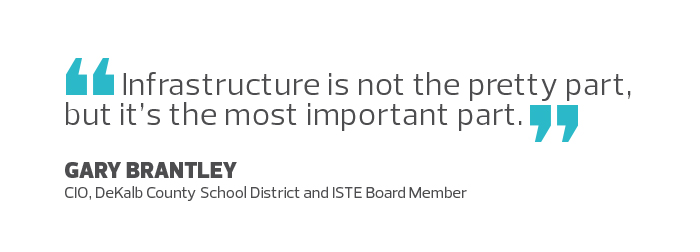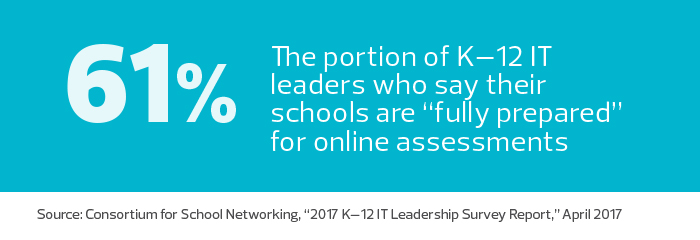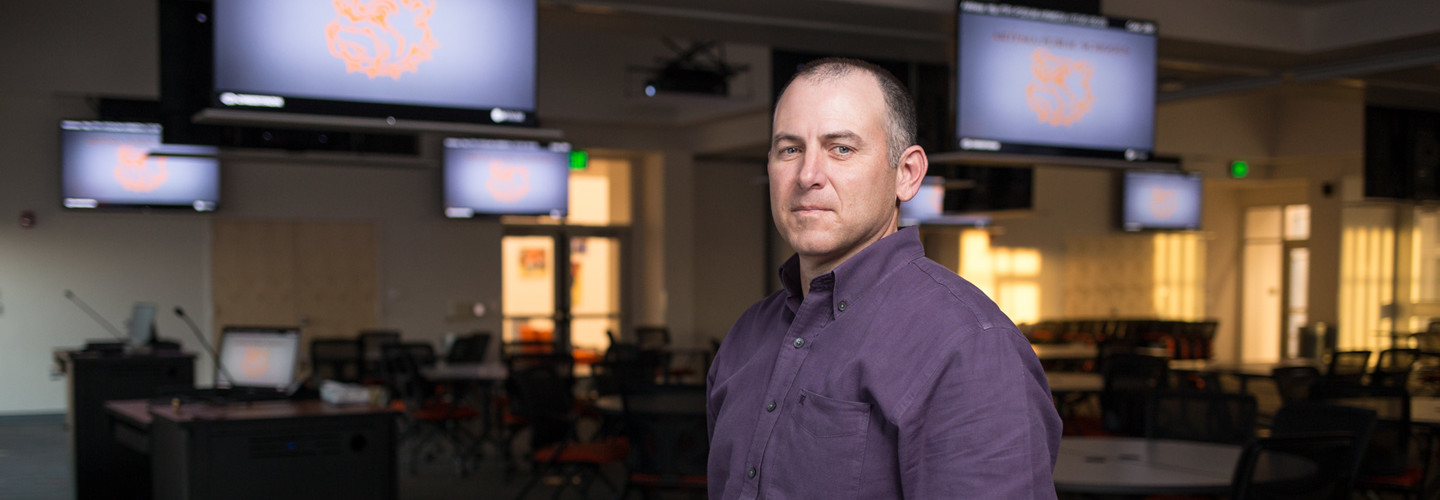Robust Networking and Data Center Solutions Power Tech Tools in the Classroom
Several years ago, education officials in Artesia, N.M., wanted to implement a one-to-one device program at the city’s high school.
The problem? In a race to carry out various IT initiatives throughout the years, officials had deployed infrastructure one piece at a time, with little to connect resources from one building to another. At first, this approach allowed the district to rapidly ramp up its technology programs. But over time, the environment became unmanageable, with an aging hodgepodge of resources that threatened to hamper classroom-focused IT programs like the one-to-one initiative.
“Our Wi-Fi was hit or miss at best,” says District Technology Coordinator Scott Stall. “We had employees bringing wireless routers from home.”
Each school building in Artesia Public Schools had its own servers for individual applications, leading to an inefficient use of both hardware and staff time. To troubleshoot, employees would have to drive to the site experiencing a problem.
Backup power was lacking, so after a bad storm, the team would have to visit each school and boot up servers. The IT shop operated out of an old house, with employees setting up offices in bedrooms and storing spare parts in a bathtub. Plants from outside had grown up through the siding and into the interior of the house, and Stall would occasionally spray Roundup indoors to keep nature at bay.
Gary Brantley, CIO for DeKalb County School District in Atlanta and a board member for the International Society for Technology in Education, says that school districts often pursue flashy, student-facing IT initiatives while ignoring the back-end solutions that will allow classroom technology to work seamlessly: “I see it a lot. You have a lot of pressure from boards and administrators to move forward on initiatives, even though your infrastructure isn’t quite ready.”
“Infrastructure is not the pretty part,” Brantley adds. “But it’s the most important part.”
A Good Infrastructure Supports Device Rollouts
In Artesia, space constraints played a major role in the district’s lack of centralized resources. “We just didn’t have the room to have a really nice, neat rack where we could say, ‘Here’s the server for math, here’s the server for English,’ ” says Thad Phipps, assistant superintendent for operations. “And it wasn’t because our people didn’t want it, or because our people weren’t ready to try something like that. We just didn’t have the space.”
Over time — and with the support of administrators, the local school board and private donors — Artesia modernized its back-end infrastructure in an effort that culminated with the opening of a new administration building and data center last summer. The district deployed 10-gigabit gateways and Cisco Meraki MR42 wireless access points (APs) at its schools, and is using advanced 24- and 48-port switches from HPE and Aruba. As a result, Artesia can better support classroom IT initiatives, including nearly 3,000 Lenovo laptops for the district’s 3,800 students.
“We’re not quite one-to-one across the district, but we’re pretty close,” says Stall. “And that was only possible because of the upgrades to get our infrastructure right.”
District leaders and community stakeholders typically express more excitement about highly visible end-user technologies such as mobile devices and interactive whiteboards, Brantley says. “A lot of times, districts don’t want to shell out the money you need to get infrastructure upgrades done, especially in a timely manner,” he says. “That’s a real uphill battle to fight. You have to tie your initiative to things in the district that people are passionate about.”

That’s exactly the approach that CTO Frankie Jackson took several years ago at Cypress-Fairbanks Independent School District when proposing massive infrastructure upgrades in the suburban Houston district. Previously in her career, Jackson had seen districts set unrealistic expectations for device and network connectivity that resulted from a failure to build a strong IT foundation. For example, one district that bought tablets had no cellular connection or Wi-Fi on-premises. Others failed to purchase the appropriate network electronics and infrastructure. Then leaders wondered why the devices didn’t work as expected.
“We said, ‘We’re not going to bring in any devices until we fix our foundation,’” Jackson says. “Districts around us were purchasing one-to-one devices for students to take home. Our vision was not to turn into a Best Buy, but to put all of our money into infrastructure to support a bring-your-own-device program.”
Still, the district needed to rally public support behind the large bond measure that would fund infrastructure improvements. Although the district’s primary data center lacked proper power and cooling, Jackson focused her messaging on “all the things that would excite our district” — specifically, classroom-focused initiatives such as high-speed, ubiquitous wireless access and blended learning.
Data Center Upgrades Power Up Classroom Connections
Prior to its infrastructure investment, Cypress-Fairbanks ISD experienced an outage at its primary data center due to overheating, and officials were forced to buy household air conditioning units at a big-box store to cool the equipment down.
Today, the district’s main data center has been moved to a colocation center, with the existing data center upgraded to a Tier III secondary site. School buildings in the district have been outfitted with Aruba wireless APs, and classrooms have been supplied with tools such as interactive whiteboards, student laptop carts and teacher devices. The district’s high schools can now support up to three connected devices per student, while middle schools can support two and elementary schools can support one.
“When I came here in 2013, we did not have enough power, cooling or bandwidth to support anything new,” says Jackson. “We’ve gone from buying low-end air conditioning units to deploying world-class technology.”
Cypress-Fairbanks now uses Liebert cooling units in its data center.
When Marysville Exempted Village School District in Ohio rolled out a one-to-one program, officials kept their infrastructure from being overwhelmed by piloting the initiative in a single grade. Very quickly, they saw that the district’s existing wireless network would struggle to handle the influx of devices. “Including students’ phones, we were looking at 50 to 60 devices in a classroom, all trying to connect to an access point,” says Technology Director Tom Powers. “The moment we went one-to-one, we saw that our infrastructure couldn’t handle the workload.”

The district’s switching infrastructure was already up to date, but Marysville needed a new wireless network to accommodate the traffic. The district, which had relied on a mix of older wireless standards, deployed C-130 tri-radio 802.11ac Wave 2 APs from Mojo Networks.
Powers says he was able to see the difference during the transition to the new equipment. Before the upgrade, a group of about 100 students gathered in a large space to take an online test. The space had four older APs, but students couldn’t even connect to the internet, and the test had to be canceled. Mojo had already sent a couple of the C-130 APs to the district, and a network engineer installed one later that day to see if it would fare better.
“Everything started rocking and rolling,” Powers says. “That was so powerful. We sat back like, ‘Are you kidding me?’ We plugged it in, and it just worked. Since then, it’s been fantastic.”
This year, Marysville’s one-to-one program is fully deployed in grades 5 through 12.
“I think we did this right,” Powers says. “Some schools have gone head over heels with one-to-one deployment, but it tanks because it wasn’t properly rolled out. We saw where our weak points were in the pilot year, and knew we needed a better solution before fully implementing our one-to-one program.”








